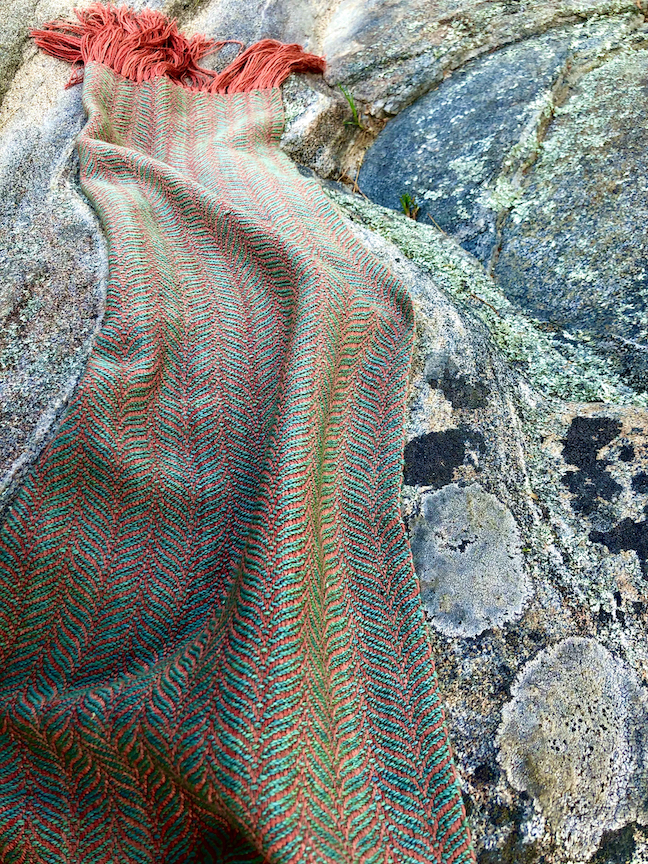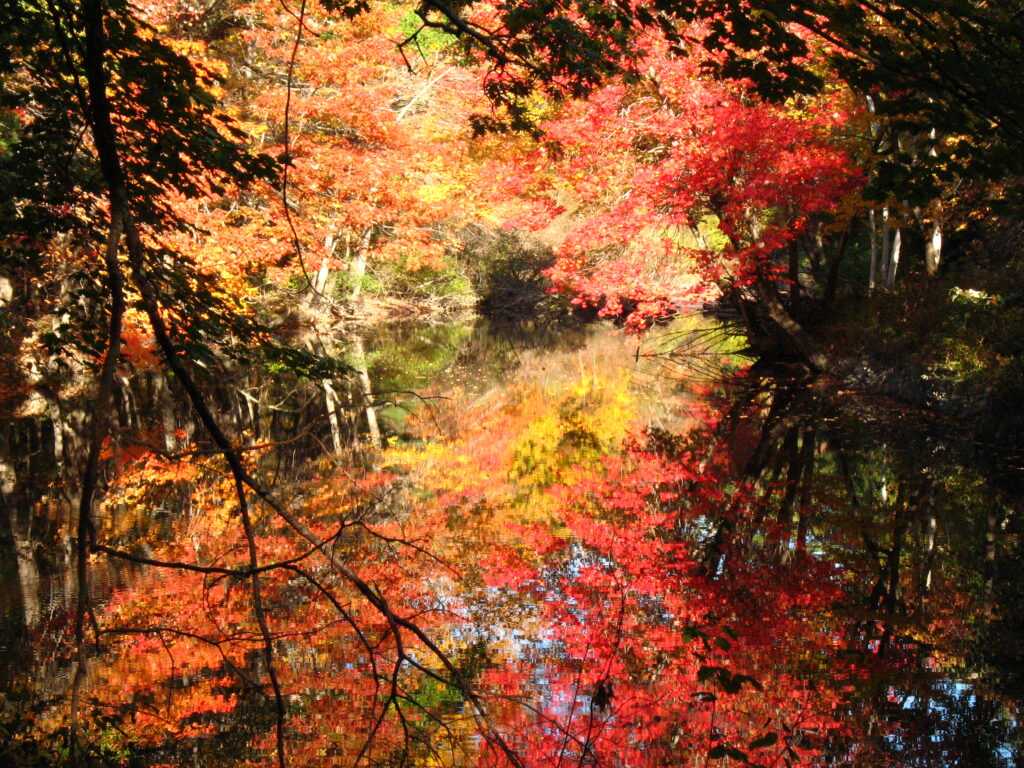In the seasonal cycle of my creative life, it feels like early springtime, as new, tender leaves sprout and stretch out towards the sun.
This is the time of creative unfurling, when after so many years of growth-filled struggle, questioning, cocooning, and healing, the sap is rising from within, fueling my impetus to really show up and to create in a boldly authentic way.
I’ve been recognizing lately how for so many years — really, for my lifetime up until now — I’ve been sticking to the (perceived) safety of the river’s edge in many ways, lingering in the still and sometimes stagnant waters, not feeling ready or courageous enough to swim out to the deep, fast-flowing currents of possibility.
But my inner voice, which I’ve been able to hear more and more clearly, assures me that it’s time for me to begin paddling out into the flow of my life with bravery, in my tender new skin. To keep moving, in an ecstatic, inspired process of creating a life in trusting partnership with my inner Muse.
In late 2020, along with so many others experiencing huge inner shifts, I decided that it was time for me to follow through with one of my most heartfelt desires: to really commit to making my art. At that time, A Skirt of Leaves was born and given a name.
Nine years ago, the name A Skirt of Leaves came to me by way of my partner Johnny in a brilliant flash of insight (he has a knack for words and for creative and playful naming of just about anything — the wittier and “punnier” the better!). I felt an affinity for it when he said it, although I filed it away in my subconscious, where it lay cloistered and nearly forgotten in the busy demands of the day-to-day.
When I began to ponder names again a few years ago, Johnny reminded me of this old idea, and I lit up. Thus, the seed that had been planted germinated and began to take root.
The meaning of a “skirt of leaves” continues to reveal itself to me in all of its depth and layers, surprising me with how well it serves as a container for my approach to making textiles, as well as my deeper hopes and longings for how I want to show up in this world. It speaks to the foundations of what I’m most passionate about and why I want to create beauty in the form of naturally dyed textiles.
Skirt
(n.) a free-hanging part of a garment extending from the waist down
(v.) to border, form or run along the edge of
Leaf
(n.) a flattened green outgrowth from the stem on a vascular plant that transforms sunlight into nourishment
(v.) to put forth leaves, to unfurl
What is a skirt of leaves, you ask?
Certainly, a skirt of leaves refers to handmade textiles dyed with colors from nature. The elegant sway of a hula dancer’s traditional ti leaf skirt comes to mind — a literal skirt of leaves.
A skirt of leaves encompasses clothing in myriad forms. It is a handwoven silk ikat tunic from Tashkent dyed with leaves of indigo; a felted coat from the ancient Caucasus dyed red with Armenian cochineal; and a hand-sewn quilt from old-time Appalachia, dyed with the husks of black walnuts. It is a rainbow-colored felt wall hanging in a Kyrgyz yurt, as well as a stunning gown of fall foliage on a sugar maple tree. A Skirt of Leaves encompasses all of these things, and more.

A skirt of leaves is a prayer shawl made in times of transformation and becoming, woven from the silkworms’ cocoons, the very substance of their metamorphosis. It is a blanket for a newborn babe, wrapped in plant fibers and colors that tell their family story. It’s a shawl worn throughout a person’s life, which shrouds their body at the end of life, bearing all of their stories, prayers, and memories, sending them off to their next transfiguration.
A skirt of leaves is a garment made with profound, rooted beauty — beauty that goes deeper than its visible form. This kind of beauty comes from how something is made: the feelings and intent put into it; the relationship between its maker and its living materials; the inspired spark that leaps from the flame of creation. This is the kind of beauty that feeds the world. It also feeds the soul, giving life and vitality to its beholder.
A skirt of leaves is an intentional kind of adornment that creates alliances of belonging in the natural world. It’s a co-creation between us and the plants, animals, minerals, and other beings who give us fibers, colors and shelter. It is literally made of soil, sunshine, and stardust, woven into form in a working partnership with our hands.

A skirt of leaves is the tree’s leavings in Autumn, fallen in a ring of vibrant ashes around her roots.
The skirt becomes the nourishment for the next cycle of birth and death — a gift given from one season to the next. It’s a protective blanket from winter’s frost, which goes to feed the ground for Spring’s renewal, giving vitality to the mycorrhizal networks that link together the beings of the forest, both seen and unseen.
A skirt of leaves is a place — a liminal, in-between place; a border zone (outskirts) where we go to meet the Other. It is also where we go to meet Ourselves. In this place, we connect with our role in the larger scheme of life, and how we can give back to it — catching glimpses into the intricate interconnectedness of all of life’s diverse beings, recognizing ourselves as tiny but necessary cells in the enormous living body of the earth.
What I’m discovering is that A Skirt of Leaves is, at its heart, about the ongoing process of meeting life, in the vehicle and vestment of a handmade textile practice.
All of the meanings and layers underpinning A Skirt of Leaves are invitations: they serve as reminders to me of how I aim to show up in this life. They are touchstones, grounding me in what I want to bring to my relationships and creative endeavors, anchoring me on days when my doubts and fears threaten to uproot me.
It’s not easy to become the kind of human that can meet the world in this way – the odds are pretty stacked against it, given the last few thousand years of cultural insanity and the violence of disconnection (from life and from ourselves), in which the vast majority of us are utterly enmeshed.
If I cultivate my capacity to hold even a fraction of the above vision, and if I inspire another person with that work, then my effort will have been worth it. As I go forward with my creations and offerings, my aim is to find the courage to swim out to the middle of the river more often.
May you, dear reader, find yourself exploring the joyful flow of that current as well, in whatever ways you most deeply desire.

